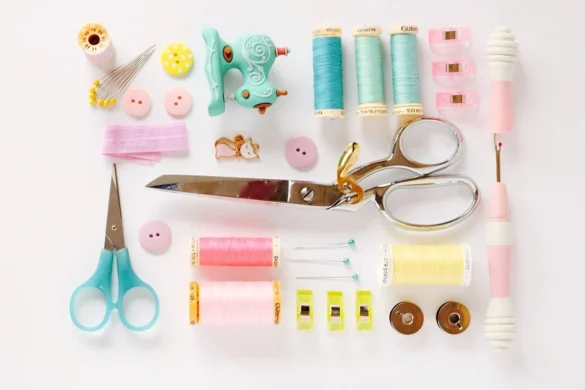Learning about colors that complement brown skin reveals something surprising – people with deeper complexions have the most options at the time they choose colors. In stark comparison to this conventional styling advice, brown skin tones can wear an impressive range of hues that might seem unexpected.
People with warm brown skin look stunning in earthy colors like terracotta and mustard. Those with cooler brown skin tones shine brilliantly in jewel tones such as emerald and sapphire. Brown skin’s remarkable versatility allows it to work beautifully with vibrant reds, mauve pinks, deep purples, and maybe even soft greens. These color relationships are a great way to get insights that help you build a wardrobe with consistently flattering shades.

Understanding Undertones and Skin Depth
The perfect color palette for your skin doesn’t depend on what you see on the surface. The magic lies underneath. Your skin’s undertones – those subtle hues beneath the surface – help explain why certain colors make brown skin look amazing. These undertones stay the same whatever the season or sun exposure. This makes them more reliable than surface color when picking flattering shades.
How to identify your undertone
Your undertone will be warm, cool, or neutral. Finding yours needs a closer look beyond what meets the eye.
The vein test gives you the quickest way to check – just look at your wrist veins in natural light. Green-looking veins point to warm undertones, while blue or purple ones suggest cool undertones. A mix of both? You likely have neutral undertones.
The jewelry test works great too. Gold looks better on warm undertones, while silver complements cool undertones. People who look good in both metals usually have neutral undertones.
The white fabric method gives you a full picture:
- Warm undertones: Off-white or cream works best
- Cool undertones: Pure white makes you glow
- Neutral undertones: Both shades work well
Your skin’s reaction to sun also tells a story. People with warm undertones tan easily, while those with cool undertones tend to burn first.
Why undertones matter more than skin shade
Your skin tone changes with seasons and sun exposure, but undertones stay constant throughout your life. This stability makes them a better guide to build your perfect wardrobe or makeup collection.
“Knowing your undertone is so important when it comes to makeup because choosing a foundation with the wrong undertone will fight against actual skin color,” many makeup professionals say. The right shade number won’t help if the undertone clashes.
Wrong undertone matches create obvious problems. Cool undertones with warm foundations look orange or muddy. Warm undertones paired with cool foundations appear washed out or ashy. The perfect color match depends on undertone harmony more than matching surface color.
The role of skin depth in color contrast
Melanin concentration in your skin – or skin depth – plays a vital role in how colors look against brown skin. Deep skin tones create beautiful contrast with both vibrant colors and soft pastels. This expands your color options rather than limiting them.
Brown skin provides an amazing canvas that makes colors pop. This explains why unexpected shades like mint green or lavender look stunning on deeper complexions. Colors appear more vivid and defined thanks to melanin-rich skin’s natural contrast.
Deep brown skin looks striking with high-contrast combinations, while low-contrast palettes create elegant, sophisticated looks. Your skin’s natural contrast level helps you pick the most flattering color intensities.
The rich diversity of brown skin tones and their various undertones creates endless possibilities for stunning color combinations. This versatility means brown skin supports an amazing range of colors from muted pastels to vibrant brights, in stark comparison to outdated fashion advice.
Why Unexpected Colors Work on Brown Skin
Traditional beliefs about what colors look good on brown skin have persisted for years. These old-fashioned ideas are now making way for a better grasp of color theory that celebrates deeper skin tones’ versatility.
Breaking the myth of ‘safe’ colors
People with brown skin often hear they should limit themselves to certain colors. They’re told some shades might clash or look unflattering. This limited view comes from beauty and fashion industries that used to focus mainly on lighter skin tones.
A common misconception suggests darker complexions should only wear dark colors – something color experts strongly disagree with. Brown skin tones actually work beautifully with many colors, including lighter shades that create beautiful contrast.
Sam Fine, a celebrity makeup artist, sheds light on why some avoid bold colors: “Drawing too much attention is a fear! I believe many women of color shy away from drawing attention to themselves because society has so often overlooked their beauty.” Some people worry about getting it wrong and “look like clowns” when trying vivid colors.
Brown skin creates an amazing canvas that lets you try more colors. This works well because undertones don’t show as much as they do on lighter skin.

How contrast and saturation enhance melanin
Brown skin’s natural richness creates depth that makes colors stand out. Melanin levels boost this depth, letting colors appear with amazing clarity and visual impact.
Contrast explains why certain colors look amazing on deeper skin tones. Bright or light shades against rich skin create stunning looks, while deeper palettes produce sophisticated results.
Color saturation plays a big role in how shades work with melanin-rich skin. Rich, saturated colors usually look better than pale pastels, unless you want that specific contrasting effect.
“With darker complexions, there’s greater flexibility since undertones are less noticeable,” notes color specialists. “This allows you to explore hues and shades that may not be ‘theoretically ideal,’ but still work beautifully without causing a clash.”
Examples of surprising color wins
These unexpected colors look stunning on brown skin:
- Lavender and soft pastels: Light colors like lavender create beautiful contrast that makes deeper complexions glow.
- Mustard yellow: This rich shade complements brown skin’s depth and works better than basic neutrals.
- Mint green: This refreshing color creates unexpected harmony with deeper skin tones.
- Bright neons: These bold shades create dramatic contrast that highlights brown skin’s richness.
- Cobalt blue: This intense shade works better than navy and creates sophisticated looks on darker skin tones.
Celebrities show these ideas in action—Rihanna rocks lighter tones as a soft summer palette, while Naomi Campbell wears bold colors that enhance her winter coloring.
The truth is simple – perfect colors aren’t about strict rules but about what makes you feel confident. A style expert puts it best: “If a ‘clashing’ color makes you feel great, wear it with confidence. The best color is always the one that makes you feel most like yourself.”
8 Unexpected Colors That Look Amazing on Brown Skin
Brown skin tones break conventional style rules and look amazing in colors that people once thought unsuitable. Melanin’s natural richness creates a perfect canvas where unexpected hues make striking statements through contrast, harmony, and depth.
1. Lavender and lilac
These soft purple shades look stunning against brown skin. Lavender brings cooler undertones with bluish or grayish hints, while lilac adds warmer pinkish undertones that make deeper complexions glow. Light lavender stands out as a strong choice that works in any season. You might want to start with accessories if you’re not sure about these shades before trying larger pieces.
2. Mustard yellow
Mustard yellow creates beautiful contrast with brown skin and makes both the color and your complexion pop. This earthy yet vibrant shade works well year-round and adds warmth to your look. People with warm undertones should go for amber or golden mustard shades with orange hints. Those with cooler undertones look best in golden mustards with subtle olive tints.
3. Soft mint green
This refreshing hue creates remarkable harmony against brown skin, though it might seem unexpected. Mint green brings a delicate, dreamy quality that softens any outfit. It adds just enough vibrancy without being too much, which makes it perfect for spring and summer wardrobes. You can pair mint green with white or beige for a balanced, sophisticated look.
4. Dusty rose
This muted pink with mauve undertones works better than bright pinks. It’s a mature alternative to last year’s Barbie pink trend, with pretty energy and a wearable edge. Warm brown skin looks best with neutral dusty rose. Deeper warm tones shine in versions with subtle terracotta hints. Cool undertones match well with berry-infused dusty rose variants.
5. Cobalt blue
Cobalt blue packs more punch than navy and suits both festive and everyday wear. It flatters many skin tones but looks especially good on darker ones. This rich blue matches almost every other color and brightens your face beautifully. White makes the perfect pairing, or you can use it as a statement piece against neutrals.
6. Burnt orange
Brown skin tones look radiant in this warm, spicy shade. It brings out your complexion’s natural warmth and creates a sophisticated, earthy look. Burnt orange shines in fall but works well throughout the year. The color blends smoothly with brown skin and highlights golden undertones without overshadowing your features.
7. Charcoal grey
Charcoal grey offers a sophisticated alternative to black with plenty of depth. This deep neutral lets brown skin glow while matching countless other colors. It creates softer contrast than stark black and enhances deeper complexions instead of overwhelming them. You can build a versatile wardrobe around this foundational color.
8. Regal purple
Deep plums, royal purples, and vibrant violet shades look majestic against brown skin. These colors create depth and drama while highlighting golden undertones in your complexion. Purple’s royal heritage adds to its luxurious feel. The purple family ranges from light to deep plum, giving you options for every season and occasion. It’s a must-have in any brown-skinned person’s color palette.
Styling Tips for Women and Men
Brown skin works beautifully with many fashion and beauty choices. The right colors can boost natural features and let you show off your personal style with confidence.
Best clothing colors for brown skin women
Earth tones make brown-skinned women look radiant by complementing their natural warmth. Deep plums, purples and burgundy add rich dimension, while cream, camel, and rust tones serve as elegant neutrals. Olive green paired with burnt orange creates bold contrast with serious depth. Bright whites add clean sophistication against darker complexions.
Your warmer undertones will look amazing with fuchsia, mustard, and warm pinks. Blue-based brown skin tones really shine in aqua blue and bright coral combinations. You can create street-savvy style by matching statement tops with neutral bottoms.
What colors look good on dark skin men
Dark-skinned men can rock almost any color. Style experts say rich, saturated hues look brilliant on darker skin. Cobalt blue, forest green, and crimson red create stunning looks effortlessly. Pink might surprise you – it’s a uniquely attractive choice that works great with deeper complexions.
Light blue might be the best color choice for dark-skinned men because it creates smooth contrast with darker tones. A maroon and black combination gives you soft contrast and effortless charm. Mustard, grey, navy, and olive are also fantastic options.
Makeup and nail color suggestions
Bright white nails create chic contrast against brown skin. Fuchsia and bubblegum pink pop with vibrant energy, while cobalt blue looks absolutely stunning. Neon yellow and orange make bold statements that really stand out against deeper tones.
Burgundy, chocolate brown, and bright white nail colors create eye-catching contrasts. Gold metallics add a touch of instant elegance.
Hair color ideas that complement brown skin
Auburn and honey blonde make golden undertones glow and help complexions look radiant. Jet black creates dramatic contrast that makes brown skin luminous. Chocolate brown adds rich, multidimensional elegance while bringing out your natural glow.
Warm-toned highlights with deeper bases give you that perfect sun-kissed look. Cherry red amplifies brown skin’s natural warmth for those wanting bold statements. Platinum makes a dramatic statement against deeper tones.
Seasonal Color Palettes for Brown Skin
Brown skin glows beautifully throughout the year. The right colors can make melanin-rich skin look stunning as seasons change. A seasonal wardrobe adjustment helps showcase your skin’s natural richness.
Spring: Fresh pastels and florals
Light pastel shades create a beautiful contrast with brown skin. Soft peach, lavender, and mint green look amazing as they bring out your natural warmth. Floral prints with ivory and coral tones add dimension without being too much. Your spring glow shines even more with peachy blush and gold highlighter.
Summer: Brights and tropicals
Summer lets you express yourself with vibrant colors that work perfectly with sun-kissed brown skin. Pink, electric blue, and bright yellow make stunning statements against deeper complexions. White clothes give you a sophisticated look, and tropical prints capture summer’s energy. Neon colors stand out and make brown skin glow.
Fall: Earthy and warm tones
Brown skin looks amazing with autumn’s rich, grounding colors. Mustard yellow brings instant warmth to your fall wardrobe and makes melanin-rich skin pop. Burnt orange, olive green, and burgundy add sophisticated depth that mirrors fall’s changing colors. These earthy shades work best with warm undertones.
Winter: Deep jewel tones and metallics
Winter is perfect for bold statements with rich jewel tones. Emerald green, cobalt blue, and deep purple create gorgeous contrast against brown skin. Charcoal gray works better than black, and metallic finishes add a festive touch. These deep colors stand out beautifully against winter’s neutral backdrop.
The journey through color theory and brown skin reveals a powerful truth: melanin-rich complexions possess an extraordinary versatility that defies outdated fashion conventions. By understanding your unique undertones and embracing the natural contrast of your skin depth, you unlock a world of stunning possibilities where everything from soft pastels to vibrant brights can become part of your signature style. The most important takeaway is that confidence is your ultimate accessory—when you wear colors that make you feel empowered and authentic, you’ll naturally radiate the beauty that brown skin so magnificently embodies.
Here are some FAQs about what colors look good on brown skin:
Which color looks better on brown skin?
Many jewel tones like emerald green, royal blue, and deep purple look particularly beautiful on brown skin. When considering what colors look good on brown skin, these rich shades create a striking contrast that enhances the skin’s natural warmth and depth.
What colors look best with brown skin tone?
Warm earth tones like terracotta, mustard yellow, and burnt orange complement light brown skin beautifully. For those wondering what colors look good on light brown skin, these hues harmonize with the skin’s undertones while adding vibrant energy to your overall look.
What colors to avoid with brown skin?
Some people with brown skin may want to avoid very pale, washed-out colors that can create a dull contrast. When selecting what hair colors look good on brown skin, extremely light platinum blondes without warm tones might not provide the most flattering contrast for all complexions.
What color makes brown skin look good?
Rich jewel tones like ruby red, sapphire blue, and amethyst purple make brown skin glow by creating beautiful contrast. These are excellent choices for what nail colors look good on brown skin as they pop against deeper skin tones while complementing the natural warmth.
How to look attractive with brown skin?
Enhancing your natural features with flattering colors is key to looking attractive with brown skin. Choosing clothing and makeup in shades that complement your specific undertones from the spectrum of what colors look good on dark brown skin can dramatically highlight your best features.
What color looks best on Indian skin?
Indian skin tones, which often have warm golden undertones, look spectacular in vibrant colors like fuchsia, turquoise, and deep orange. These shades from the palette of what colors look good on brown skin complement the natural warmth in Indian complexions beautifully.
What color suit suits brown skin?
For formal wear, navy blue, charcoal gray, and deep burgundy suits look exceptionally sharp on brown skin. These sophisticated shades from the range of what colors look good on dark brown skin provide enough contrast to stand out while maintaining professional elegance.
Does brown skin look good in gold?
Yes, brown skin looks absolutely stunning in gold jewelry as the warm metallic tone complements the skin’s natural warmth. This makes gold an excellent choice when considering what colors look good on light brown skin for accessories and jewelry selections.
Does yellow look good on brown skin?
Yellow can look fantastic on brown skin, particularly mustard, golden, and amber shades that harmonize with warm undertones. When exploring what colors look good on brown skin, these yellow variations create a beautiful monochromatic effect that enhances the skin’s natural glow.



